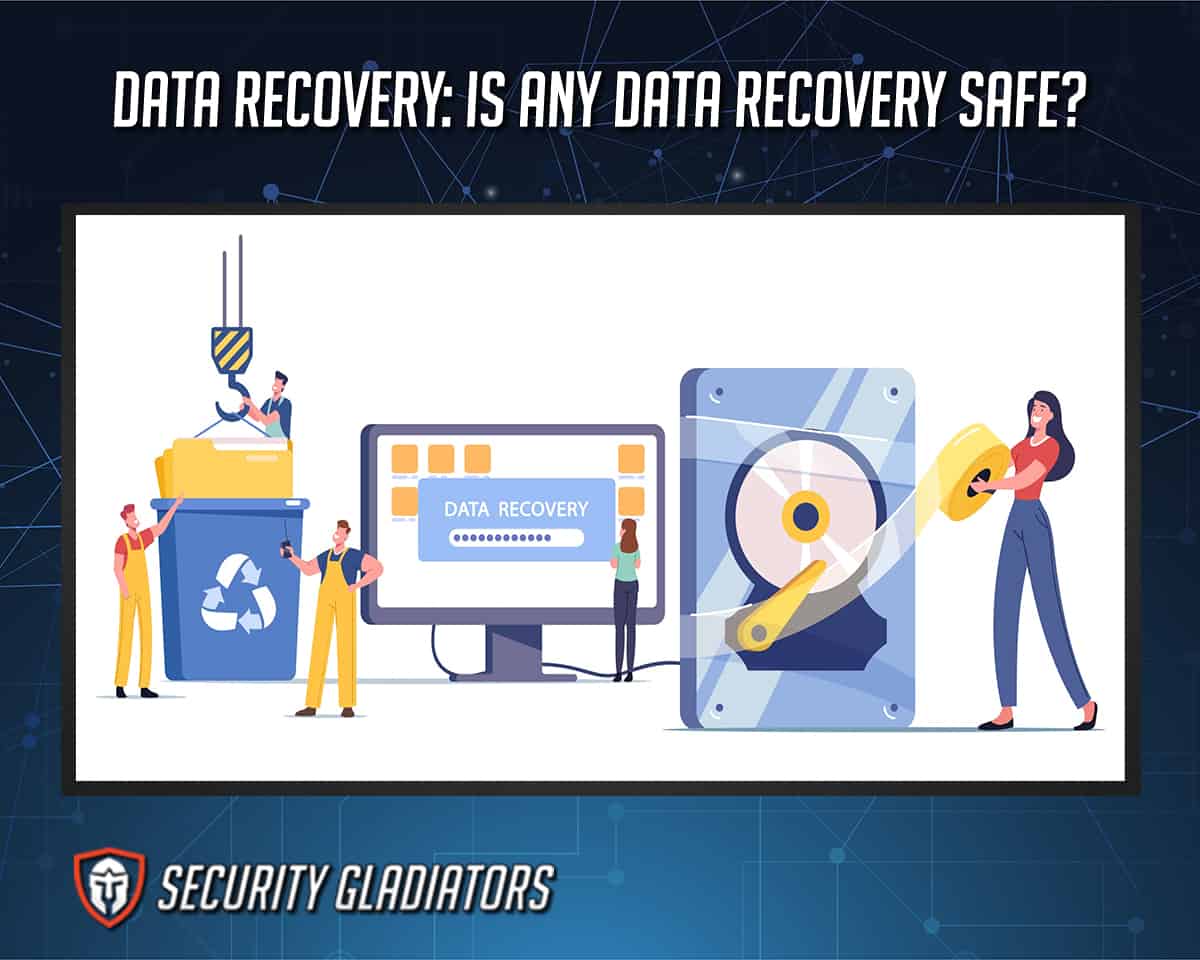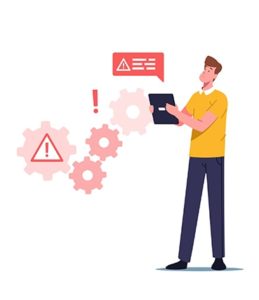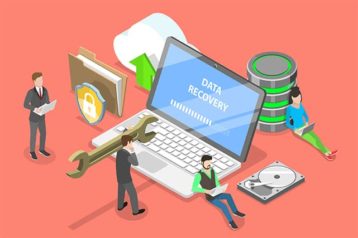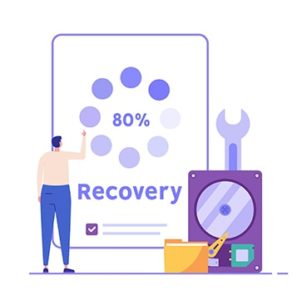The term “data recovery” describes the process of recovering or securing data from broken or corrupted hardware systems. In data forensics and espionage, the phrase describes methods for locating “hard to get” data, typically in the event of hardware or system failures or when system data has been deleted.
Table of Contents
What is Data Recovery?
Data recovery is retrieving information on a hard drive that a user cannot access anymore because someone or something deleted the file or information or the storage device suffered some damage. Different types of data recovery techniques exist; however, the data must have been in the storage at some point for any data recovery to work. For example, an employee may create a document or project file but forget to save the file for whatever reason. Unfortunately, such a document or file cannot be recovered using any data recovery method. Additionally, none of the current techniques for retrieving data can handle instances of permanent deletion. Permanent deletion happens when another piece of data takes up the storage space initially occupied by the now-deleted data.

The two main categories of data recovery methods are software-based and ones that involve replacing or repairing the damaged hardware parts in a lab environment. Data recovery typically involves using a software program to decipher the logical framework of the problematic storage, read out the necessary information, and then provide the restored data to the user in a form that can be used for further copying. Experts carry out physical repairs in extreme situations, such as when some electrical or mechanical components of the drive are no longer functioning correctly. In this case, efforts are focused on a single extraction of the most important content.
How does Data Recovery work?

A computer designates the space a deleted file once occupied as being accessible for new files. Additionally, the deletion process removes some of the file’s unique information. On the other hand, data recovery software searches the computer’s data storage devices for files in this state and aids retrieval.
Businesses can use data recovery services to recover the files that were mistakenly deleted from a computer’s system files but still exist in fragments on the hard drive. The steps involved in data recovery vary according to the circumstances surrounding the data loss, the software used to create the backup, and the backup target media. Many desktop and laptop backup platforms allow users to restore lost files independently.
How safe is data recovery?
If the proper software is employed, data recovery is often safe. Data recovery software is designed to restore data. Installing spyware or stealing privacy data from the computer or phone is impossible using data recovery software. The program merely recovers bits of lost data.
What factors affect Data Loss?
1. Natural disasters

Natural disasters such as fires or tornadoes can occur anytime and affect a business by destroying the company’s data, computers, and even the entire business. If data is not regularly backed up, natural disasters could damage a company permanently. Ninety-three percent of businesses that suffered a calamity and lost their computing infrastructure for ten or more days declared bankruptcy within a year.
This is important:
Data backups should be performed frequently, and files should be kept in a secure area to prevent long-term damage to the business and limit disaster effects. Data lost due to a disaster is often unsalvageable since natural disasters can completely destroy a company’s technology. This is why companies should back up all data in remote locations to avoid damage from local natural disasters.2. Theft

Data loss due to theft typically occurs when a laptop or other data storage device is stolen. Data loss from theft can be pretty substantial because of the alarming rate at which laptops are stolen. Laptops are portable and frequently carried outside of gated corporate facilities, which is why laptops are more susceptible to theft.
In most cases, the information on a laptop can be worth far more than the actual laptop itself. Therefore, replacing the laptops won’t be expensive compared to replacing the stolen information. Data that is encrypted, however, can still be stolen but cannot be accessed. Viruses and hacking are two ways that data can be stolen digitally.
3. Human error

Since human beings are fallible by nature, human mistakes are the primary cause of most business data loss. An effective business requires a lot of data that must be typed, edited, updated, and deleted—processes prone to user mistakes. Examples of human errors that lead to data loss include accidentally deleting data files and spilling liquids on storage devices and computers. Without a backup, mistakenly erased files may be lost forever. Businesses should set up proper workflow processes, including regular work saving and methods for organized data backup.
A typical event that causes data loss is spilling coffee or another liquid on a laptop. In most cases, fluids leak onto the keyboard and the laptop’s interior components. Drinks have the potential to generate a short circuit, which could harm a computer’s hard drive and other electronic components. If the hard drive is damaged, then the odds of being able to access the data reduces drastically. If the incident takes place with the laptop turned off, the damage is lessened. Dropping a data drive or laptop into the water is an accident that is closely similar to this one. The results are complete immersion, damage to the machine, and nearly guaranteed data loss.
4. Computer viruses

Hard disk and corporate network systems can become infected by computer viruses, which corrupt data. Important data can be stolen, corrupted, encrypted, or deleted by viruses. Additionally, viruses can hack into the network infrastructure of a whole company and interfere with computer hardware.
A typical example of computer viruses is malware, which includes ransomware. If a ransom is not paid, ransomware threatens to prevent access to the data or make the information publicly available. Phishing emails can be used to steal and corrupt data, resulting in functionality loss. Computer viruses can be quickly eliminated with the latest effective antivirus software.
5. Power failure
If data were not routinely stored, a disruption in the power supply or an electrical outage while a user was writing a document could cause data loss. Auto-recovery procedures can only effectively retrieve the preserved portion of the data.
Warning:
Unexpected power outages have the ability to damage the operating system and hardware, which could lead to data loss. Data access issues caused by computer rebooting issues can also occur.6. Software corruption
Data loss can also occur as a result of software failure or crash. Data loss or corruption can happen when any program used to request data crashes. A software error can also occur when updating multiple files in a file editing program, leading to the deletion of specific files that failed to save or update. The same thing can happen to data during backup.
Common backup mistakes include the system’s inability to make file copies and prevent automatic file deletion. When data is mistakenly identified as malware by antivirus software, the data may end up getting deleted. Data loss and corruption can also result from errors when file formats are converted.
When should you use Data Recovery Software?

Data recovery software comes in handy when recovering files that have been damaged digitally in one way or another due to a corrupt drive, file, or accidental deletion. When a user mistakenly erases a file, even “permanently,” data recovery software can be highly effective at restoring them. Deleted data isn’t actually deleted immediately; instead, the computer overwrites the item from the hard drive at a future date. Before that happens, a data recovery software can still retrieve the data.
When choosing data recovery software, there are a few essential features to look for. One important consideration is the variety of file formats that the program can retrieve. Many businesses utilize proprietary file types, which are less prevalent than the standard image, video, and text file types. Most data recovery tools can recover these file types. Choose software that supports all platforms and devices the company, employees, and customers employ.
Another element is the material on which the data is written. This will undoubtedly be useful to businesses that are updating their storage techniques. Some data recovery programs can restore deleted files on CDs and DVDs, but not all of them can. Expert assistance may be necessary if the storage medium has been physically harmed or if the files that need to be recovered are essential to the business.
What are the softwares used in Data Recovery?
Getting the lost files back is made possible by data recovery software. The software carries out a full system scan to identify files that can be recovered. This system scan usually includes the storage device on the computer to search for formatted, corrupted, or deleted files.
The software used in data recovery can be classified into:

- Free
- Paid
- For beginners
- For professionals
- Free Software
This refers to any data recovery tool available to download and install. Free software has several advantages; for one, the software costs nothing. Because the software doesn’t come with any financial costs, the user base is typically quite large. Many users mean more eyes on the software, so mistakes and defects can easily be discovered and solutions can be found as soon as possible.
Developers are more inclined to give up on the project when something (like a paid project) arises since the program is free. Furthermore, support is more or less nonexistent because there isn’t a paid personnel on hand. Additionally, updates can be irregular. Some software actually falls under the “freemium” category. In essence, the basic features of the software is freely available, but the best features are hidden and cost money. There is also free software available to download called “shareware.” Users are urged to share this kind of software. However, there is a time limit on how long the program can be used for free.
Paid Software

As the name implies, paid software costs money. This may come in the form of a monthly subscription fee or a one-time payment to get full access to the software. Paid software typically receives regular updates and has a support system to assist users with any problems that arise. A customer support staff may be on hand and accessible by phone, live chat, email, or a ticket system, in addition to providing helpful articles.
Beginner Software
Beginner software aids in guiding new users through the steps involved in using the program to minimize confusion so the data recovery process is as smooth as possible. Most beginner software is simple and has a straightforward graphical user interface. This is particularly helpful because there may be numerous options for users to select from.
Professional Software

This kind of software contains sophisticated features, including the capacity to recognize a wide range of file formats and deal with hundreds of different file formats. Professional data recovery software is more challenging and can be controlled using a command-line interface. This kind of software is better suited for users who are clear about their goals and familiar with data recovery. A typical characteristic of this type of user is one with previous experience using data recovery software. An expert in data recovery, for instance, is the most likely target audience for professional data recovery software.
What is the safest data recovery software?
Data loss incidents have never been a pleasant experience for individuals and businesses that handle data. As a result, many companies invest in data recovery software to alleviate the repercussions of data loss. The safest data recovery software makes the data recovery procedure simple, quick, and secure for individuals. Any secure data recovery software, for example Disk Drill data recovery software, CrashPlan, and many more, should feature a user-friendly interface, device compatibility, simple recovery techniques, data retrieval from various storage types, and an organized file structure.

